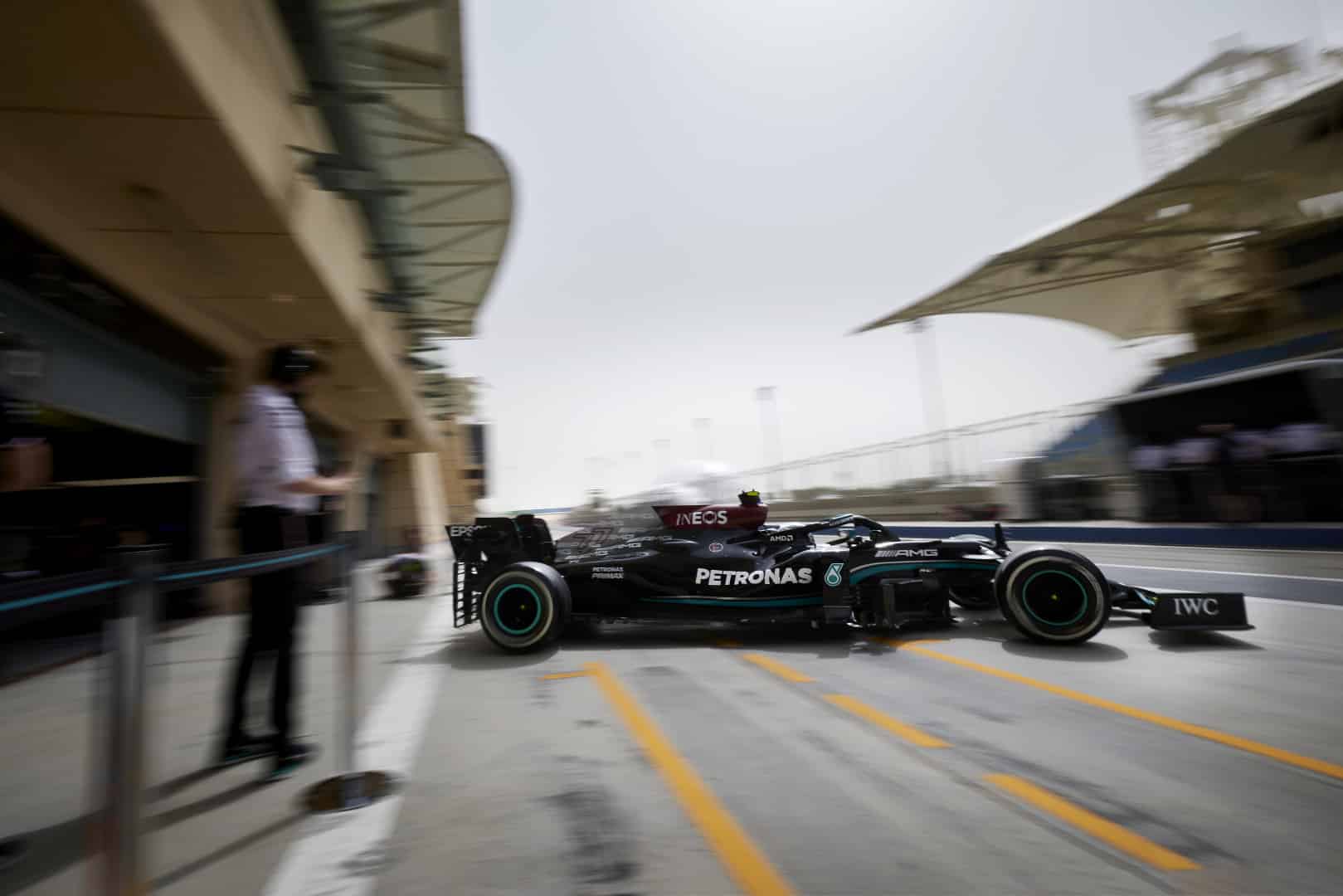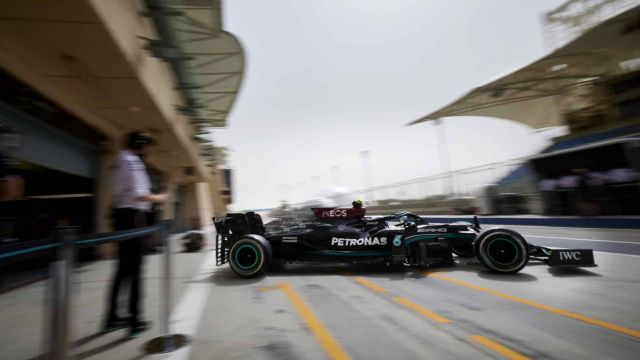How Do You Set Up a Formula One Car?


Setting up a Formula One car is a complex process that requires a deep understanding of aerodynamics, mechanics, and electronics. Every aspect of the car, from the suspension to the tyres, must be fine-tuned to maximise performance on the track.
In this article, we will explore the key elements involved in setting up a Formula One car and the steps teams take to ensure their vehicles are in optimal condition for each race.
How Do You Set Up a Formula One Car?
What does ‘car set-up’ mean?
Finding the perfect set-up for a Formula One car is an almost impossible task. Cars consist of thousands of interacting components, a small number of which teams are permitted to tweak and change for each race. Yet when they do so, the effects are felt across the whole car. ‘Car set-up’ therefore refers to the optimum compromise of all the different elements of the car; harmony is the elusive aim for engineers.
Set-ups differ from track to track because each circuit has its own characteristics, presenting a unique challenge for tyres and aerodynamics. The singular driving style of each driver is also an important factor, which engineers must account for, and no driver set-up will be identical. If the right compromise is found, the driver will feel confident to extract the maximum performance from the car.
On the aerodynamic side, rear wing level and front wing angle can be adjusted, while front and rear ride heights can also be tuned to change the aerodynamic behaviour. Suspension settings such as camber, toe angles, stiffness, and the performance of the rear wheels can also be modified, as can the weight distribution – moved forward and backwards within the permitted FIA limits. Some settings, such as the differential, brake bias, and rear brakes, can even be changed by the driver on their steering wheel while on track.
It’s rare for drivers to use identical car set-ups and typically this will only be the case if one driver has had limited track running or are struggling with the balance. Bigger parameters such as wing levels and ride heights will be very similar, but smaller details like aero and mechanical balance can differ quite widely depending on their styles.
What pre-race weekend preparations do F1 teams complete?
Hundreds of working hours are spent preparing the car set-up in advance of each grand prix weekend, with the goal of delivering the car to track in optimum shape. A large part of the pre-event work is running simulations, both on the Driver-in-Loop (DiL) simulator and computer simulation, to test and interrogate possible set-ups to determine their potential. With efficient simulation, the team can hit the ground running on Friday and focus on fine-tuning for qualifying and the race, looking at elements like track temperature, wind direction and tyre condition.
Thousands of laps are completed in the virtual world on state-of-the-art simulators, which uses sophisticated lidar-scanned, 3D track maps and detailed virtual models of the car. The simulator drivers try out various set-up options and continue the programme over the Friday of a race weekend, sometimes working through the night, to react to and maximise the learnings gained on track.
Ahead of a race weekend, engineers are also running offline computer simulations, using a racing line file generated from the DiL simulator. Engineers can complete thousands of virtual laps a day using this method because the laps can be run in parallel and at a sped-up pace, whereas the DiL must run in real-time.
The computer simulations produce thousands of gigabytes of data, including crucial information on tyre pressures, and this information is generated into graphs and plots, which are useful for understanding the correct wing levels, ride heights and other parameters over a range of set-ups and conditions. This phenomenal computing power allows the engineers to compare set-up changes side by side, mastering how the car will respond to the smallest of tweaks.
Of course, these simulations can never be 100% accurate, and the quality of the simulation is dependent on the quality of data and how accurately the model represents the physics of the car and tyres. But in a world of limited track testing, these tools are crucial for providing the initial first step in the set-up process: deciding on a direction to enter the race weekend with.
Additionally, incorrect tuning of suspension components can lead to increased tyre wear, which is a critical factor to monitor during longer race scenarios.
How does car set-up evolve over a race weekend?
Once the engineers know what base set-up they will be running in Friday’s first practice session, it’s down to the mechanics and engineers to ensure each car hits the track with the correct settings and components. The sessions on Friday are crucial for finding the right set-up direction to use in qualifying and the race, so it’s all about maximising the track time and conditions.
Engineers can change as many parameters as they like on the car, but the more changes they make, the harder it is to understand the effects each change has on the car performance, especially during the live sessions. When changing the parameters, it tends to be tackling one problem with one solution. But there are occasions where multiple changes are required.
Between the sessions is when more substantial set-up changes are made to the cars, such as adjusting downforce to optimise straight line speed, to suit the evolving track temperature and conditions. Between five and 10 parameter changes are typically made during the gap between sessions, depending on the progress being made with the car set-up.
In the week leading up to the race weekend, the race engineering group will discuss and decide the run plans for each session. Like pre-season testing, run plans feature a detailed schedule of how many laps need to be completed and what the objectives are for each run.
Some influence on the run plan will come from other departments, who will submit priority items such as new parts to try or specific data to be gathered. The race engineering group then prioritises these items and fits as many as possible into the run plan for each session. The DiL and computer simulations also indicate different areas that need to be included on the run plans.
Every lap in practice generates 60 to 100MB of data, depending on the number of sensors on the car, and these figures multiply by four in the post-processing phase. Teams receive live telemetry in just 10 milliseconds to the garage for the trackside engineers to monitor, and in just 30ms to the factories during European rounds.
Once the runs are completed, the full data offload takes 20 seconds per lap to generate and be available to the garage and factories. All of this data is analysed both trackside and in the factory to understand the car’s strengths and weaknesses. Elements like tyre temperatures, wear, pressures, and the overall handling of the race car are also monitored, to ensure we understand if the car is in the right performance window.
At the end of each day, the groups at the track and in the factory debrief, with engineers and the drivers sharing feedback and findings to refine the set-up direction or find a new route. The car set-up tends to differ slightly for qualifying and the race. In qualifying, your priority is to have a more responsive car so more front end is added, at the expense of rear tyre degradation. But in the race, more understeer is required to protect the rear tyres, which wear out the quickest.
Balancing Straight-Line Speed and Cornering Performance
One of the most crucial aspects of setting up a Formula One car is finding the right balance between straight-line speed and cornering performance. The rear wing plays a significant role in this balance, as it directly affects the amount of drag and downforce generated by the car. A higher rear wing angle will produce more downforce, which is essential for cornering performance, but it will also create more drag, reducing the car’s top speed on the straights.
On circuits with long straights, such as Monza or Spa-Francorchamps, teams will often opt for a lower downforce setup to maximise straight-line speed. This involves using a smaller rear wing angle, which reduces drag and allows the car to achieve higher top speeds. However, this comes at the cost of reduced cornering performance, as the car will have less grip in the turns.
Conversely, on tracks with many high-speed corners, such as Silverstone or Suzuka, teams will prioritise cornering performance by running a higher downforce setup. This involves using a larger rear wing angle, which generates more downforce and allows the car to carry more speed through the corners. However, this setup will also create more drag, limiting the car’s straight-line speed.
Finding the optimal balance between straight-line speed and cornering performance is a delicate process that requires extensive testing and data analysis. Teams use computer simulations and wind tunnel testing to evaluate different rear wing configurations and determine the best setup for each track. Ultimately, the goal is to find a compromise that allows the car to be fast on the straights while still having enough grip to navigate the corners effectively.
The Role of the Driver in Car Setup
While the engineers and mechanics work tirelessly to optimise the car’s setup, the driver plays a crucial role in the process. The driver is the one who ultimately has to pilot the car on the track, and their feedback is invaluable in fine-tuning the setup to suit their driving style and the specific demands of each circuit.
During practice sessions, drivers will complete numerous laps, testing different setup configurations and providing detailed feedback to their engineers. They will report on various aspects of the car’s behaviour, such as the balance between oversteer and understeer, the effectiveness of the brakes, and the level of grip from the tyres. This feedback helps the engineers understand how the car is performing and what changes need to be made to improve its competitiveness.
Each driver has their own unique driving style, which can significantly influence the optimal setup for their car. Some drivers prefer a car with a more pronounced front end, allowing them to carry more speed into the corners, while others prefer a more stable rear end for better traction on corner exit. The driver’s preferences must be taken into account when determining the ideal setup, as a car that doesn’t suit their driving style can hinder their performance on the track.
Experienced drivers, such as seven-time World Champion Lewis Hamilton, have a deep understanding of how different setup changes affect the car’s behaviour and can provide precise feedback to their engineers. This level of expertise is crucial in optimising the car’s performance and finding the elusive “sweet spot” that allows the driver to extract the maximum potential from the vehicle.
In addition to providing feedback, drivers must also adapt their driving style to suit the car’s setup and the specific challenges of each track. This may involve adjusting their braking points, modifying their steering inputs, or altering their throttle application to optimise the car’s performance. The ability to adapt and make the most of the car’s setup is what separates the great drivers from the merely good ones.
Parts of this article have been provided by a Mercedes press release.





